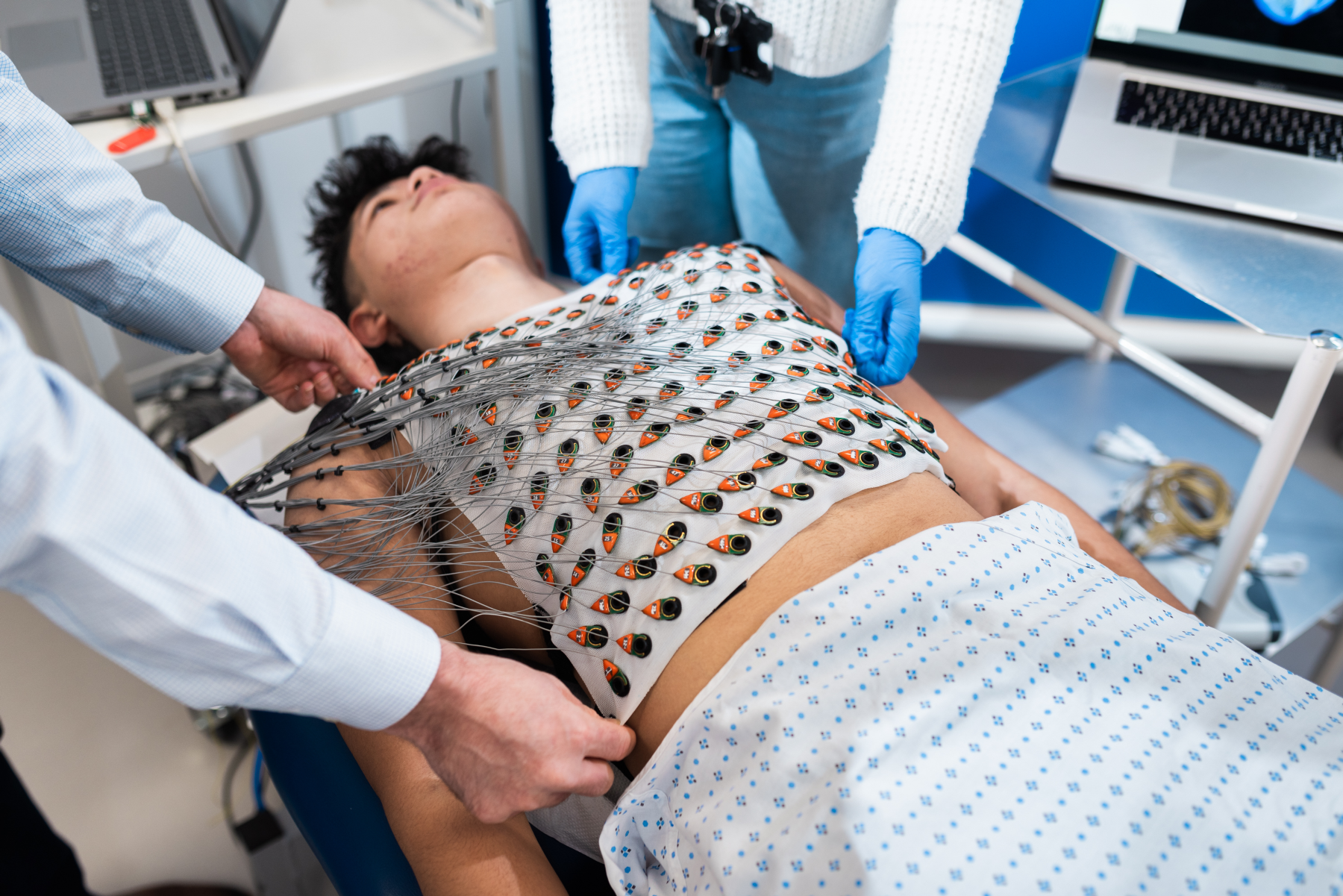‘Tech vest’ can detect early signs of heart disease

Researchers at Barts Heart Centre have found that a reusable ‘vest’ can detect a potentially fatal heart condition much sooner than currently possible.
They found that by looking at the electrical changes in a person’s heart, doctors can tell if a person has the heart condtion hypertrophic cardiomyopathy (HCM) earlier than today’s tests. This could help patients get the care they need sooner.
HCM affects around 1 in 500 people in the UK. Caused by a mistake in a person's DNA (known as a mutation), it makes the muscles of the heart wall become thick and stiff, limiting how well it works. HCM can lead to heart failure in some people and is the most common cause of sudden unexpected death in young people.
Researchers at Barts Heart Centre and UCL were able to find these electrical changes using an electrocardiographic imaging (ECGI) ‘vest’ which has 256 sensors on it. These sensors can give a detailed map of the 'electrics' of a person's heart in just five minutes, something which until now would involve an invasive, expensive and time consuming procedure. From this electric map, doctors can tell if the person's heart is healthy or is showing signs of disease.
Dr George Joy, the study lead, based at Barts Heart Centre said: “By finding subtle electrical abnormalities using our new technique, we are able to detect hypertrophic cardiomyopathy earlier. This is important as it means we can potentially act earlier, providing new treatment to slow the disease as well as fast-tracking individuals to clinical trials that have potential to stop the disease entirely.”
Co-lead, Dr Luis Lopes, also based at Barts Heart Centre added: “Next steps of the research include repeating these results in a larger group of patients and following individuals over time to see how these early electrical changes affect the risk of life-threatening heart rhythms later on.”
The study involved 200 patients and nearly 40 healthy volunteers from across London, including from Barts Heart Centre. Patients included people diagnosed with HCM and people with the mutation but no signs of the disease.
The team found that the vest could identify HCM 1 in 4 people who, when tested using the standard ways of diagnosing the disease (an MRI or a 12-lead ECG), showed no signs of the disease.
It follows previous work by the same researchers which showed that an 'advanced cardiac MRI' could be used to detect early structural changes in HCM that are not present on conventional tests.

Maps of electrical conduction obtained from the new ECGI vest. Left: individual without HCM, noted by standard conduction (light blue). Right: individual with HCM showing slower conduction (dark blue).
This study was supported by the British Heart Foundation, National Institutes of Health and Care Research (NIHR), Medical Research Council, and NIHR Biomedical Research Centres at UCLH and Barts Health NHS Trust. Patients were also recruited from St George’s Hospital and Royal Free Hospital. You can read the full research paper here.
